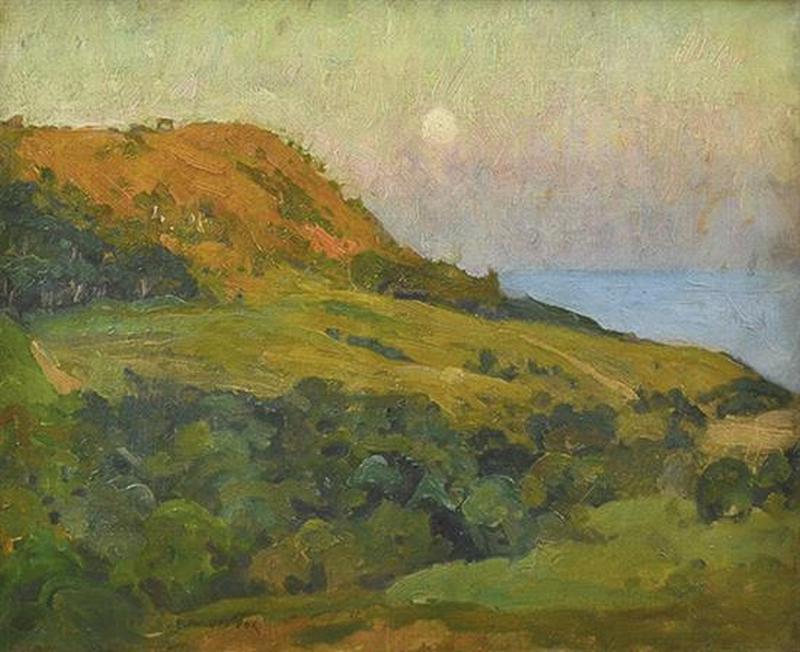English on Phillips Fox
In a small museum, volunteers play a significant role in the buoyancy of the organisation. If there is a hierarchy of tasks, from the prosaic through to the intellectual, our volunteers perform across the board. Libby English is one of those indispensable members of the local CAM community. Here, she reflects on one of the gallery's most loved works by E Phillips Fox.

Libby English on E Phillips Fox
Many moons ago (ahem), I was driven along the coastal road from Sydney to Newcastle. Such was the impression that the picturesque seaside town of Stanwell Park made on my teenage psyche that I vowed to return another day and even settle there. 'Reflecting' on this lyric Phillips Fox painting has brought this nostalgia welling to the surface.
It is clearly a nocturne, a painting type named by Whistler and borrowed from the musical lexicon. (Think, particularly in this instance, of Debussy's Clair de Lune.) Dreamy, pensive, subdued; its calming presence soothes the soul. The warmth of the palette settles the viewer in front of a warm fire on a chilly night.
So romantic; but here's where things get dangerous... We are all guilty of knowing what we like and, in some cases, not being able to nail the reason why. Aesthetics is not an exact science. A pleasing harmony takes more than colour and subject matter. One of the crucial elements is the arrangement or composition of the included features.
Is there a secret code artists use to this end? Well, yes and no. There are such things as the rule of thirds and the Golden Mean but they are hardly secret, as any competent artist will tell you. They are also not rules, rather guidelines or suggestions. Rules are a challenge – there to be broken as Abstract Expressionism, exploding in the 1940s and '50s, was keen to show.

In a private collection is another Phillips Fox Moonlight, Stanwell Park, NSW, (smaller at 36.3 x 44.5cm), painted in the same year as CAM's eponymous work. We know this is not a study as it toured Australia in an artist's exhibition in 1949–50. Let's do a comparison. I'll call CAM's work Moonlight CAM and the other Moonlight PC (private collection).
The latter has all the hallmarks of having been produced en plein air – the paint hastily and generously applied – although this is not verifiable. Looking to Moonrise CAM, on the other hand, it's more refined and considered and, central to this exercise, carefully curated. The creek bed is now vital to the drawing of the viewer's eye through the moonscape from lower right to left and beyond into the hazy horizon, now a major feature of the work.
This directs us to another useful device/guideline – the Golden Spiral, very similar to, and sometimes called, the Fibonacci Spiral. Beware, comparing these can take you down a mathematical rabbit hole. Below is the result of overlaying it on Moonlight CAM.

Notice how the it sits so comfortably over the moon, visits the headland, scoops up the edge of the creek and gently lands on the left hand side of the frame. Flick your gaze from one image to another. Helpful? Too much info? Overanalysing? Perhaps, but the technique helps me to appreciate the mastery of the Phillips Fox and others. The comparison highlights just how important is the 'framing' of subject matter. The new composition lifts CAM's painting to a new level of aestheticism.
The circularity of life is becoming more apparent as I get older and can be quite a disarming concept. In this instance, I have returned to Stanwell Park but in a most unexpected way and that sits comfortably with me.